On this date in 1801, watchmaking pioneer (and namesake of today’s Breguet watch company) Abraham-Louis Breguet obtained a patent for his most famous horological invention, the tourbillon. Today, numerous watchmakers have taken up the challenge of not only producing tourbillons for wristwatches, but also taking them to the next level in terms of materials, design technology, and combinations with other horological complications. Here are 12 examples of noteworthy tourbillon timepieces that debuted at this year’s SIHH and Baselworld watch fairs.
Where better to start than the Breguet brand itself, which proudly carries on its founder’s legacies of both tourbillon watches and breaking new ground in horology? One of this year’s most talked-about new releases at Baselworld was the Breguet Marine Equation Marchante 5587, which combines a tourbillon with both a perpetual calendar and an innovative equation-of-time function for a rare, triple-high-complication timepiece. The watch displays the running equation of time at a glance using a “running” (marchante) central hand on the dial rather than on a more traditional subdial showing the minutes to be added or subtracted to the current civil time. It even displays the cam that controls the equation-of-time function, tourbillon and perpetual calendar. The cam on the Breguet Marine Equation Marchante 5887 is shaped like a figure eight, and visible on the dial through a window that also displays the tourbillon carriage. It runs on a sapphire disk so as not to block the view of the tourbillon. The watch, which is available in a 43.9-mm case in platinum or rose gold, celebrates Abraham-Louis Breguet’s appointment in 1814 as a member of the Bureau des longitudes in Paris, a group of experts who measured the earth’s physical properties, and the historical Breguet brand’s role as official marine chronometer maker to the French Royal Navy. For more details and pricing, click here.
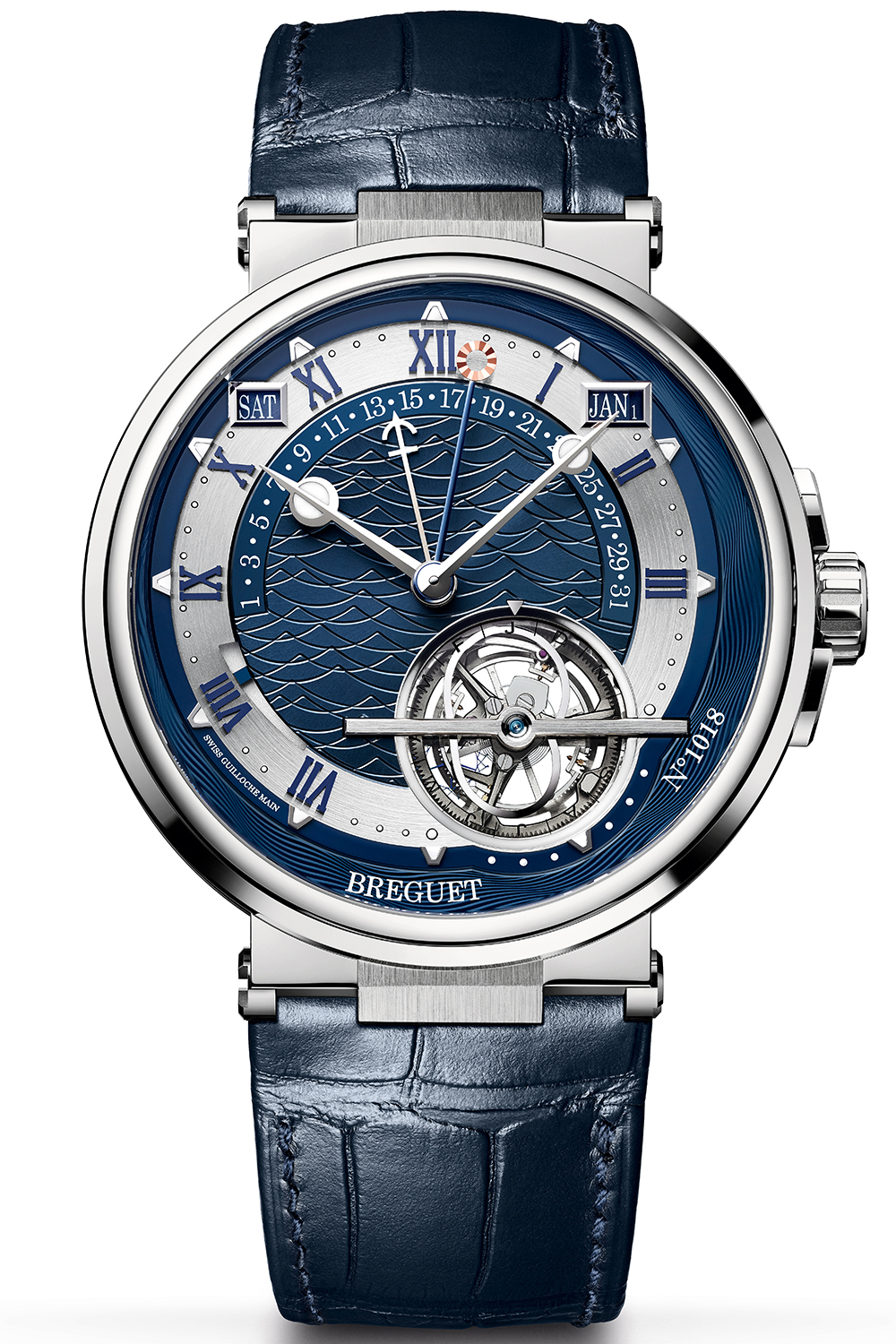
The A. Lange & Söhne Tourbograph Pour le Mérite is the fifth model in the Saxon brand’s “Pour le Mérite” series, all of which feature a fusee-and-chain transmission system in their tourbillon movements. Accordingly, it combines five complications: the tourbillon, fusee-and-chain, chronograph, rattrapante, and perpetual calendar. The dial is arranged in a traditional style, with Arabic numerals, a railway-track minute scale, blued steel hands for the time and rhodiumed gold hands for the calendar. The cloverleaf arrangement of the subdials is a tribute to the look of early Lange pocketwatches. The chronograph and rattrapante are controlled by a column wheel. The movement uses a screw balance and features two diamond endstones suspending the tourbillon cage and a black-polished tourbillon bridge. Inside the 43-mm-diameter platinum case is Lange’s new manufacture Caliber L133.1, comprised of 684 parts, of which fully 206 are devoted to the perpetual calendar with its analog displays. It will correctly indicate the duration of each month until the last day of February 2100, and the moon-phase display is calculated to remain accurate for 122.6 years. The combination of tourbillon with fusée-and-chain transmission is meant to offset the effects of gravity and waning spring force in order to improve rate stability and rate accuracy. The traditional black polishing on the tourbillon bridge, a complex finishing technique, is applied here the first time ever to a curved surface. The watch is limited to 50 pieces. Click here for more details, photos, and price.
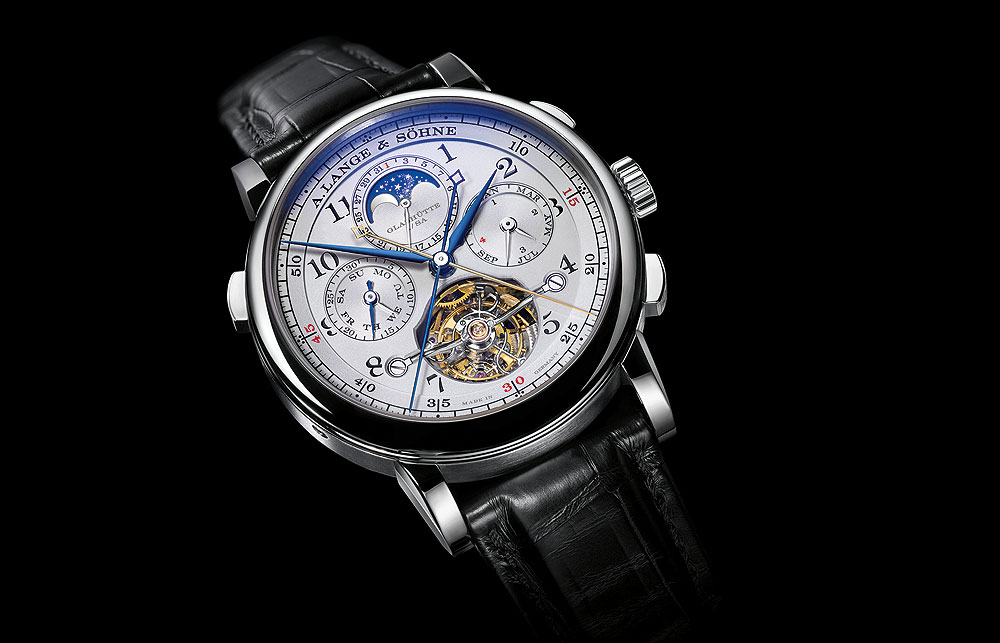
The Arnold & Son Tourbillon Chronometer No. 36 is a tribute to a historically significant, 240-year-old pocket chronometer created by the modern brand’s namesake, English watchmaker John Arnold (1736 – 1799). It follows the classical codes of the English chronometers of the era, with the movement’s main pivoting elements — wheels, barrels, and the tourbillon itself — mounted on their own bridges, which on this watch are triangular, multlevel, and skeletonized. The one-minute tourbillon, positioned on the dial side, features the three-spoke design common to Arnold & Son and weighs mere fractions of a gram. The tourbillon cage consists of 58 total components and is mounted on a mirror-polished bridge with hand-chamfered polished edges and circular satin-finished surfaces. The manual-winding movement, Caliber A&S8600, has a mainplate and bridges treated with a golden coating, another characteristic feature of John Arnold’s historical pocketwatches. Its laser-engraved double barrels provide a power reserve of 90 hours, and the movement has been COSC-certified as a chronometer, a rarity for tourbillon movements. The watch’s 46-mm case, in stainless steel or rose gold, is mounted on a hand-stitched alligator leather strap.
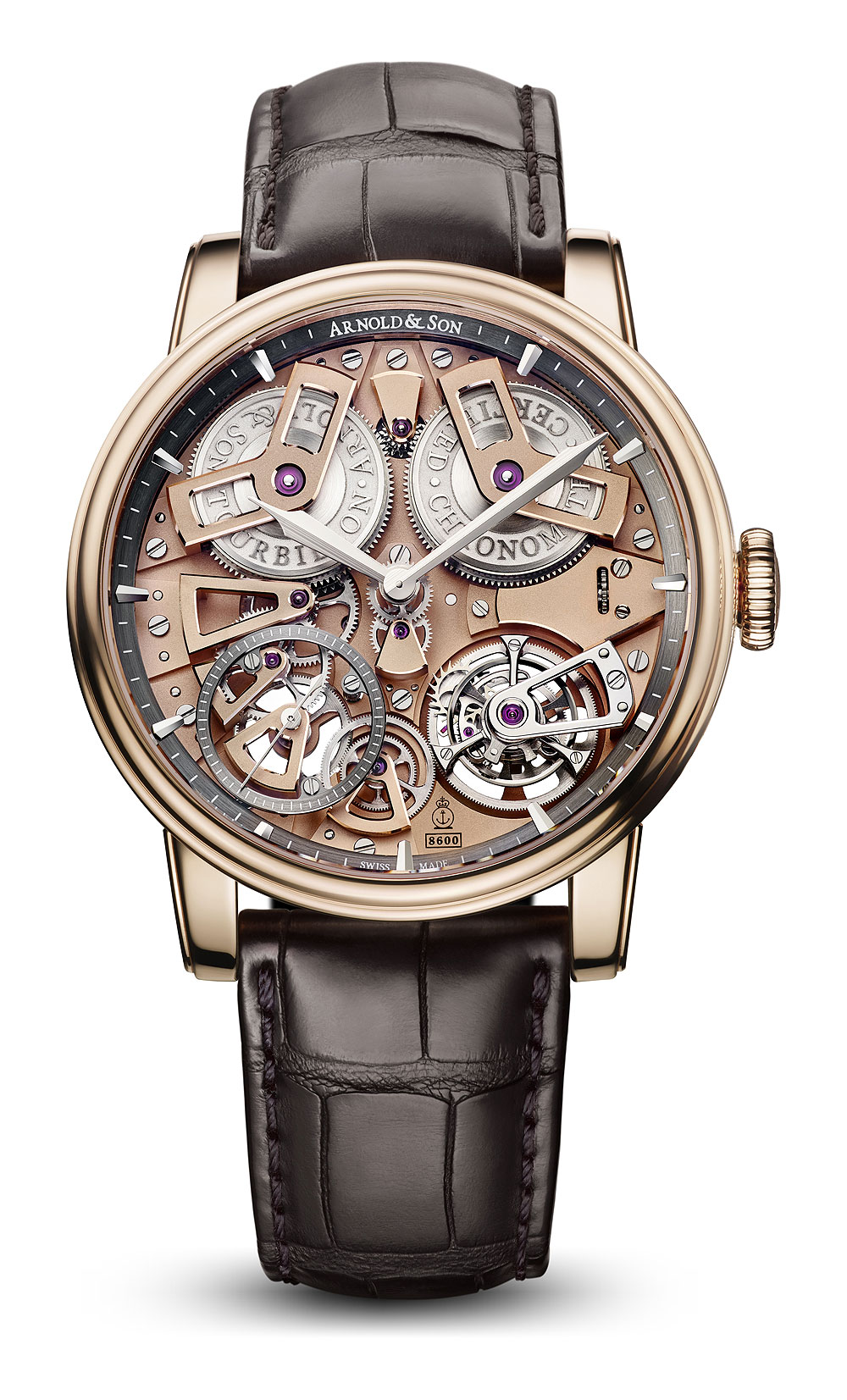
Master jeweler Harry Winston continues to explore the possibilities of tourbillon timepieces with its Histoire de Tourbillon 8, which features double bi-axial tourbillons linked by a spherical differential and displays the time on two off-center cones. Inside a 51-mm white gold case, and dominating one half of the watch’s dial, two tourbillon cages each complete a rotation every 75 seconds on a 30-degree inclined axis, while a second tourbillon cage turns on its own axis, completing a rotation every 45 seconds. A balance wheel in the second tourbillon oscillates at a frequency of 21,600 vph. Each tourbillon is composed of 117 total components and weights just 0.76 grams. Each of their regulating movements operate independently, so a spherical differential is required for the watch to obtain an average from the two tourbillons and in effect achieve a single, unified time measurement with maximum precision. The movement, Caliber HW4503, is equipped with two fast-rotating barrels, one of them equipped with a slipping spring that prevents overwinding, that provide the watch a power reserve of 55 hours. It is made almost entirely of lightweight, rigid titanium, the material also used to form the three-dimensional bridges that anchor the hour and minute cones that make up the unconventional time display on the other half of the dial, across from the double bi-axial tourbillons. At 6 o’clock is a power-reserve indicator resembling a grooved scroll. Two color variations of the Harry Winston Histoire de Tourbillon 8 are available, each limited to only 10 pieces: one in pure anthracite, the other (pictured) in dark gray with red accents.
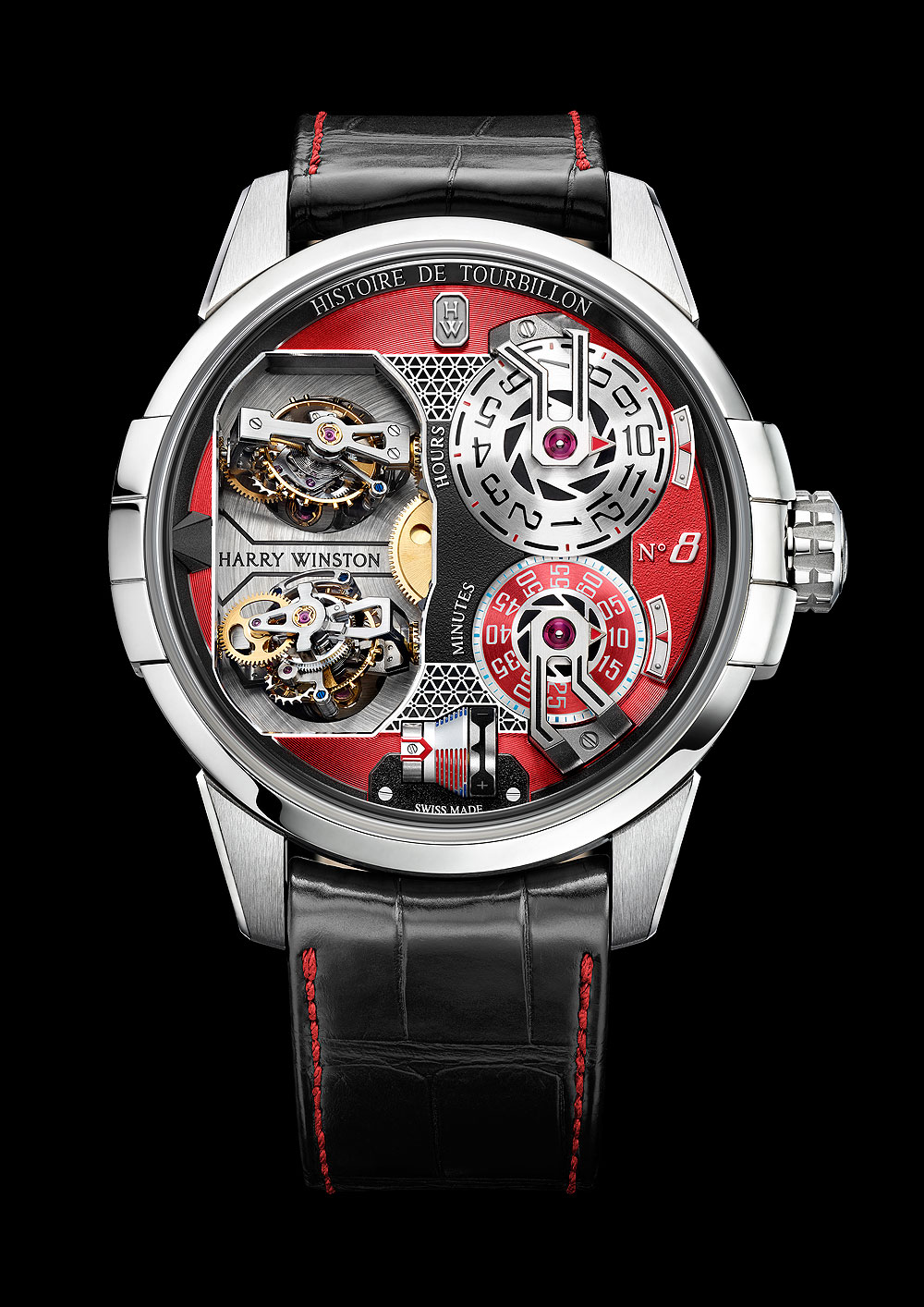
Hublot’s MP 09 Bi-Axis Tourbillon — one of the brand’s high-tech showpieces at Baselworld — is part of the Hublot “Manufacture Pièce” (MP) collection, which consists of timepieces created primarily to demonstrate the Nyon-based company’s “watchmaking savoir-faire.” The unusual case design, in fact, is devoted to demonstration. The dance of the bi-axial tourbillon, with one rotation of 60 seconds and another one of 30 seconds, is on display in a case that functions like a miniature curio-cabinet. An extreme-angled, three-sided sapphire crystal, as steep as a ski slope, affords views of the movement from three different angles. The movement, automatic caliber HUB9009.H1.RA, has a five-day power reserve, which is displayed prominently on the dial over a red banner. The date indicator is arranged in a tiered half-circle index on two levels, surrounding the hour and minutes dial. The movement is coated in a gray anthracite color – like the engine of a Ferrari, not coincidentally Hublot’s automobile partner – and the strap is black rubber. The generously proportioned case is 49 mm in diameter and 17.9 mm thick, and is offered in titanium (limited to 50 pieces) and in Hublot’s proprietary King Gold (limited to 20 pieces).

The Jaeger-LeCoultre Geophysic Tourbillon Universal Time represents the first time that Jaeger-LeCoultre has paired a flying tourbillon with the sophisticated world-time function introduced in the Geophysic Universal Time; an all-new in-house movement, Jaeger-LeCoultre Caliber 948, was created for the timepiece. Its 43.5-mm case is made of platinum and is topped with a domed sapphire crystal that offers a panoramic view of the dial’s 360-degree representation of the Earth as viewed from space. Surrounded by a world-time ring, the slightly convex miniaturized globe features blue lacquered ocean areas, with a guilloché waves motif, and satin-brushed continents. The continents move across the central disk every 24 hours while the flying tourbillon, in its aperture at 4 o’clock, rotates around itself and the dial. The tourbillon, without a bridge to hold its cage, appears to float in space above the Earth like a horological satellite; particularly eye-catching is the rapid rolling of the Gyrolab balance wheel, an invention exclusive to tourbillons made by Jaeger-LeCoultre and notable for its watch-anchor shape, the inspiration for the JLC logo. All of the watch’s functions are set by a single crown. Click here for more details on the watch.
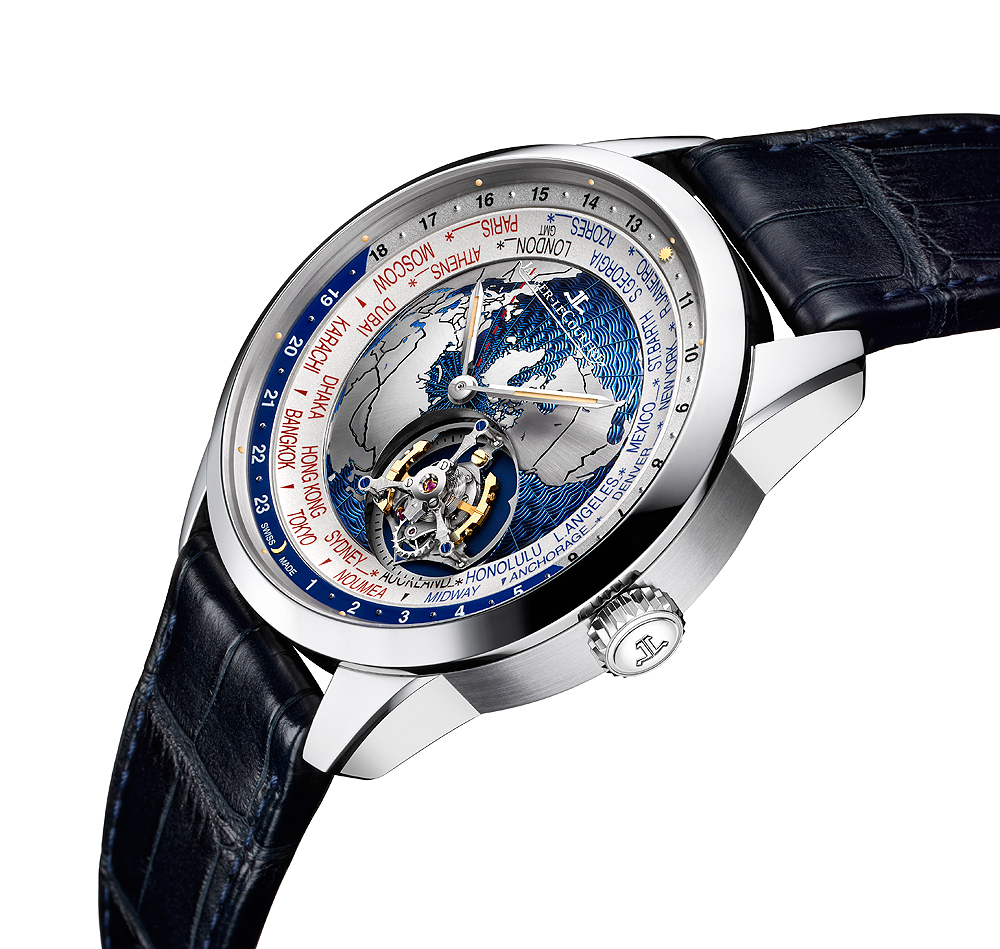
Finding its inspiration in today’s graffiti, or “street art,” the Manufacture Royale ADN Street Art Collection — which features a distinctive skeletonized movement, with a one-minute tourbillon on silicon ball bearings — offers the owner an infinite number of customized color schemes thanks to its use of water transfer printing. The unusual movement, composed of superimposed, overlapping squares, becomes the canvas for the process, which begins with placing water soluble film with a printed motif in ink on the surface of water in a vat. Then, an activator is added to dissolve the film and leave just the ink pattern on the surface. Finally, the movement components are placed in the water and the ink wraps around them and adheres, leaving a colorful coating that is then rinsed and rhodium-plated to complete the process. The 46-mm steel case is in Manufacture Royale’s ultra-ergonomic ADN style (“ADN” represents the initials of “DNA” in French), with a round bezel held by 12 visible screws and mobile, pivoting lugs formed by two lateral stretcher pieces. Each unique piece comes on a flexible rubber or leather strap with a steel folding buckle.
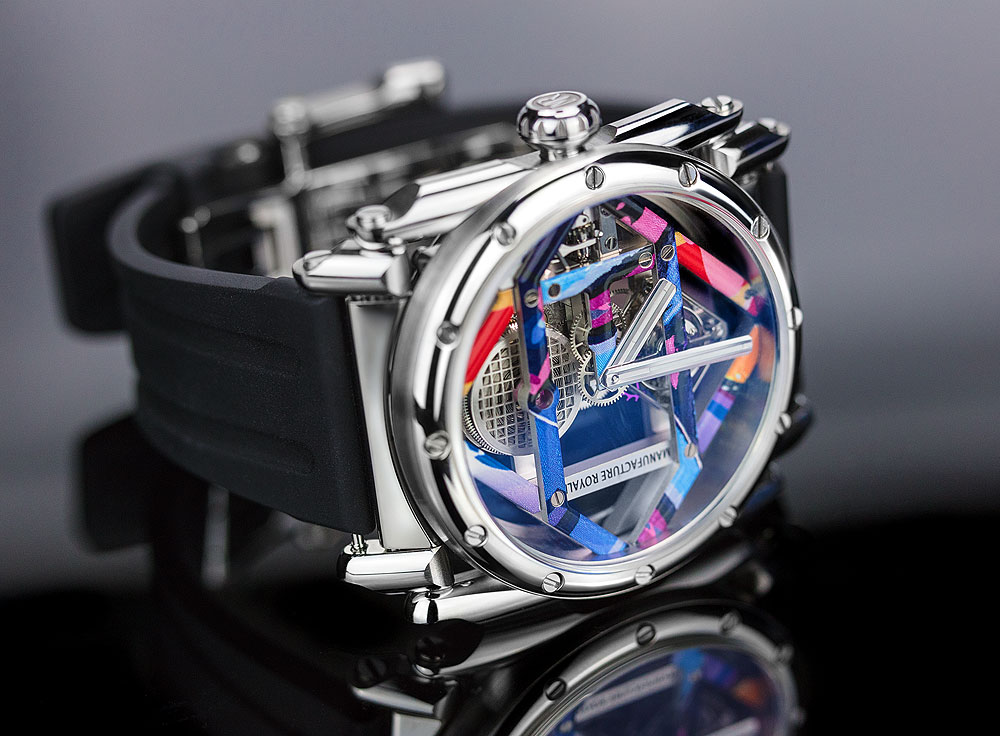
The MB&F Horological Machine No. 7, nicknamed “Aquapod,” combines a radially symmetric design inspired by a jellyfish with a flying tourbillon and some elements of a classical divers’ watch. Drawing inspiration from brand founder Max Büsser’s encounter with a jellyfish during a beach holiday, the watch’s three-dimensional movement architecture has its roots in the “onion” pocketwatches popular in the 18th century. Developed entirely in-house by a talented team of “Friends” (MB&F stands for “Max Büsser & Friends”), the movement of the HM7 features a winding rotor, mainspring barrel, hour and minute indicators, and flying tourbillon, all concentrically mounted around a central axis and rotating concentrically around it. Energy generated by the tentacle-like rotor at the bottom travels up to the tourbillon regulator at the top via a series of gears that allow the power to transition from level to level in the manner of climbing stairs. The tourbillon regulator, positioned as the “hood” that protects the ring of neurons that serves as the jellyfish’s brain, is surrounded by the hours and minutes displays, on two concentric, spherical segment disks, made of aluminum and titanium, supported by ceramic ball bearings and rotating with a very low coefficient of friction. The case — which measures 53.8 mm in diameter and 21.3 mm thick — has been described by MB&F as a “three-dimensional sandwich, with two hemispheres of high-domed sapphire crystal on either side of a metal case band.” The two case materials are titanium with a blue ceramic bezel (pictured) and rose gold with black bezel. More on the MB&F HM 7 Aquapod, including additional photos and prices, here.

Each year, Parmigiani Fleurier releases a special timepiece in the brand’s signature “Abyss Blue” color — an intense hue achieved by subjecting a gold dial to a process called galvanoplasty. Achieving the exact blue color is highly challenging, as the craftsman must know exactly when to remove the dial from the plating bath, lest a delay of one second too long result in blue turning to brown. The new Ovale Tourbillon, part of the antique-inspired Ovale Pantographe series, is this year’s release, featuring the collection’s distinctive oval-shaped case in rose gold with a stepped bezel and tapering, chamfered lugs. The Abyss blue dial, with its côtes de Genève pattern and typical Delta-shaped luminescent hands, hosts a large 30-second tourbillon in an aperture at 6 o’clock and a fan-shaped seven-day power reserve indicator at 12 o’clock. Inside the 45 mm by 37.3 mm case is manual-winding Caliber PF500, brainchild of brand founder Michel Parmigiani, whose hand-beveled bridges and côtes de Genève finishing are visible through a sapphire caseback. The dark blue alligator strap comes from leather-goods specialist Hermès.
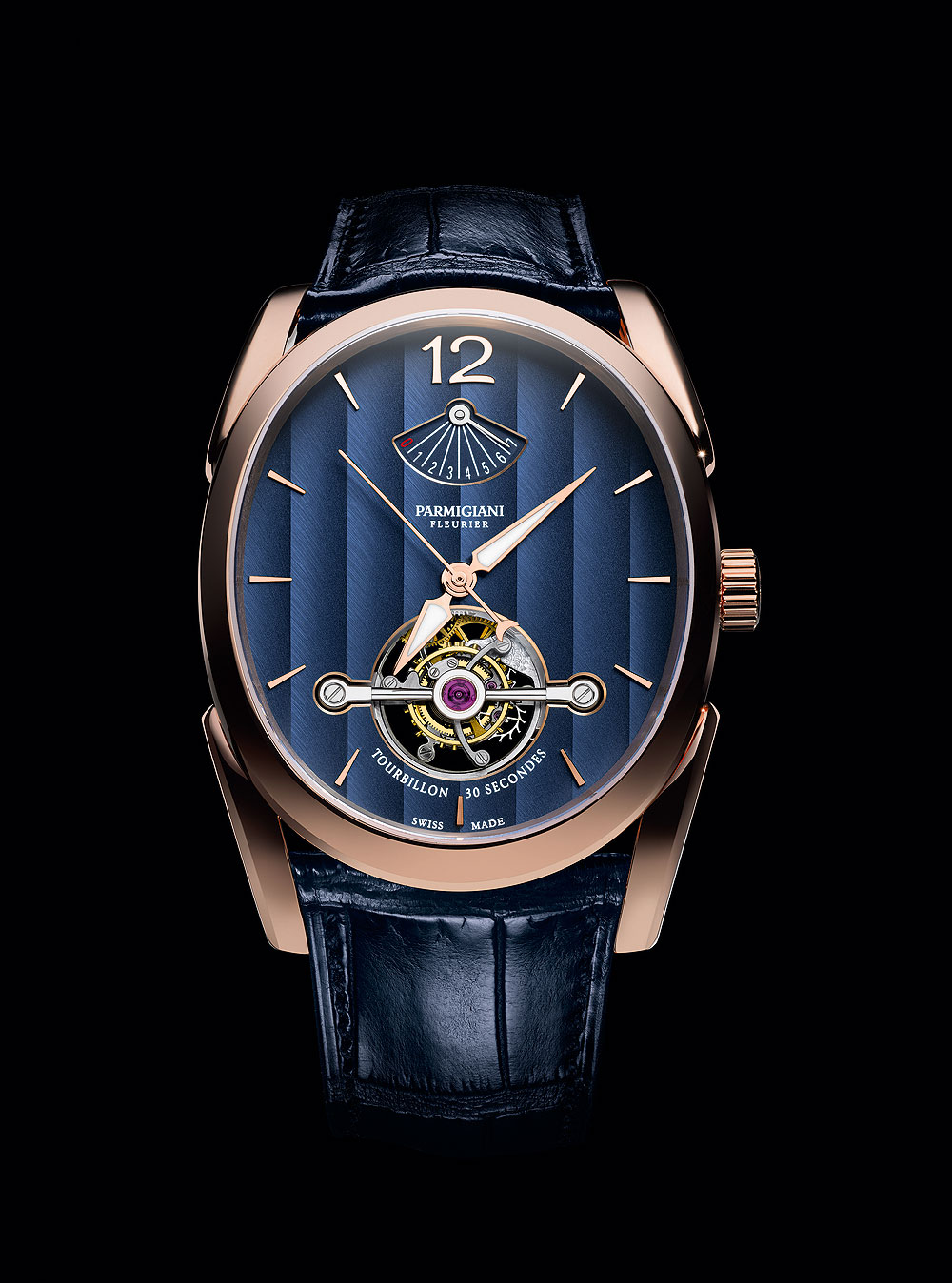
A limited edition of just eight pieces worldwide, the Roger Dubuis Excalibur Spider Italdesign Edition, was released alongside the “Italdesign Automobili Special,” an ultra-limited-series, customizable car from Italy-based Italdesign, a renowned producer of cutting-edge prototype show cars. A variation on the brand’s Excalibur Spider Flying Tourbillon, the watch carries on the car’s Italian national colors motif, with red, green, and white highlights on its dial and strap, red-tipped hour and minute hands, and red vulcanized rubber surrounding the black DLC titanium crown. The carbon case is 45 mm in diameter and water-resistant to 50 meters; the ceramic bezel is decorated with red liquid ceramic and black lacquer decor for the numerals. Roger Dubuis designs its skeleton movements — like the one in this watch, manual-winding Caliber RD505SQ — in an openworked style from the ground up, rather than skeletonizing an existing movement, as most other brands do. This watch takes the openwork motif a few steps further, using skeletonization techniques not only on the movement but also for the case, flange, and hands. The “Spider” reference is to the movement’s complex, sculptural, spiderweb-like architecture, which also incorporates the off-centered “star” motif that characterizes all Roger Dubuis skeleton calibers. More details, photos, and pricing here.

British watchmaker Peter Speake-Marin launched his eponymous brand’s most complicated models to date this year at SIHH. The Speake-Marin Crazy Skulls combines a 60-second tourbillon, a minute repeater carillon, and a clever, Memento Mori-themed dial animation that tells “a story of two souls linked through death by a heart.” The heart in question is formed by the intersection of the two skulls on the dial, framing a red gem in the center of the hidden tourbillon cage at 6 o’clock. When the slider on the left side of the case is activated, the chimes of the minute repeater carillon sound while another mechanism simultaneously separates the two skulls to reveal the tourbillon. At the same moment, the Roman numerals at the 12 o’clock position begin to fall apart, representing the despair of two (deceased?) lovers as their world falls apart. When the three gongs of the repeater have completed the sounding of the time, the skulls re-form the heart, hiding once again the tourbillon, as the numerals rebuild themselves to their standing “XII” position. tell “a story of two souls linked through death by a heart.” The case, in Speake-Marin’s now-familiar “Piccadilly” style, measures 42 mm in diameter, with the case middle and lugs made of titanium and bezel and caseback made of platinum. The movement, manual-winding Caliber SMC01, features a 72-hour power reserve and a hand-finished tourbillon cage at 6 o’clock. Click here for more info.
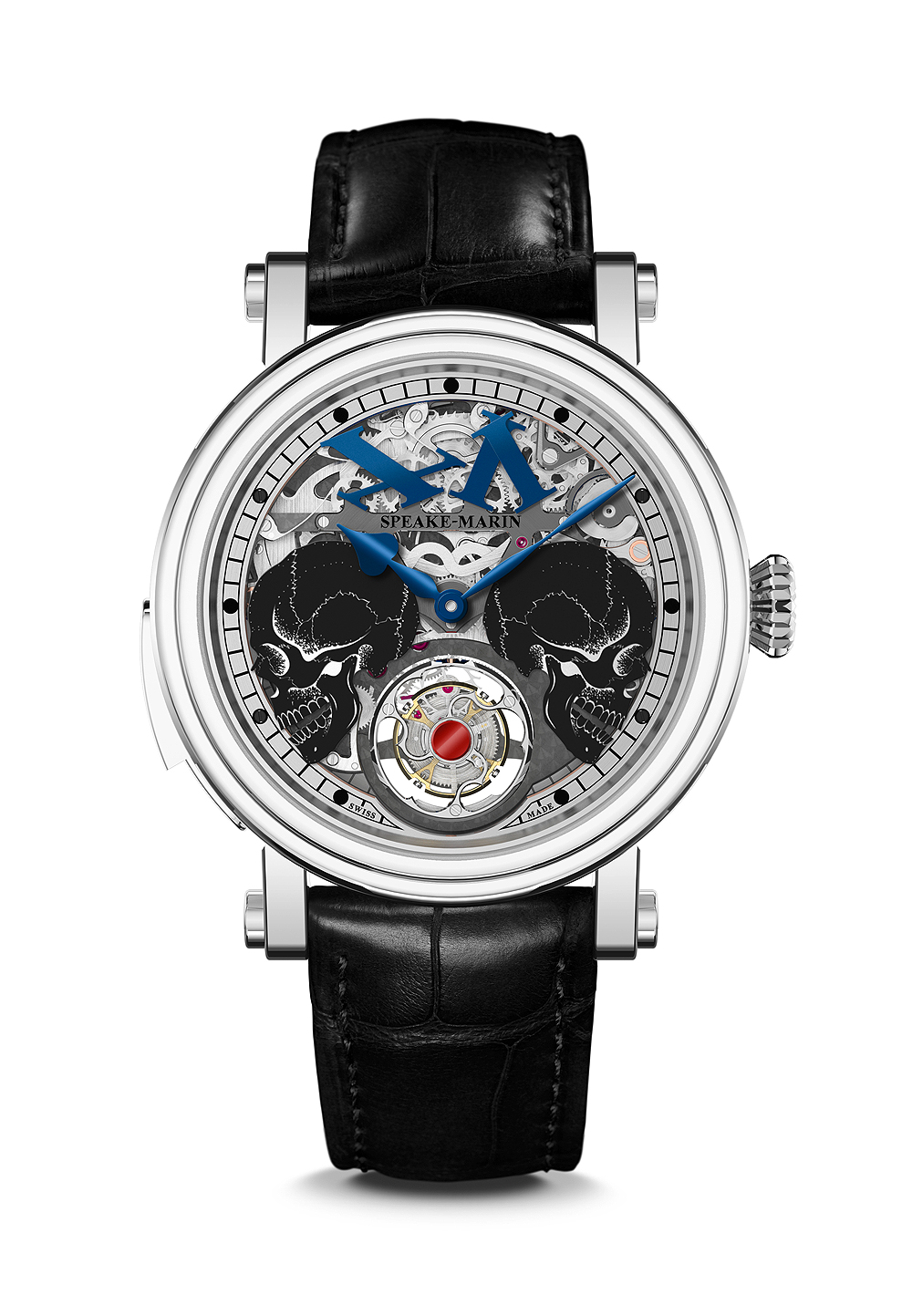
Ulysse Nardin added the Marine Tourbillon Grand Feu to its collection this year. Inside its 43-mm stainless steel case, with beveled edges and 100-meter water resistance, the watch contains the new in-house Caliber UN-128, with automatic winding, a silicon escapement, a 60-hour power reserve, and, most notably, a flying tourbillon, showcased in a large-eye-catching aperture at 6 o’clock on the dial. The cage, wheels, screws and hairspring of the tourbillon mechanism are produced in-house by Ulysse Nardin, and the milky-white grand feu enamel dial comes from the brand’s own dial-making company, Donze Cadrans. Classical hour and minute hands mark the time on the dial’s black Roman numerals, while the 60-hour power reserve is indicated on a semicircular scale at 12 o’clock, from “haut” (fully wound) to “bas” (stopped). The grand feu enamel process, something of a specialty for Ulysse Nardin, is a 17th century art that uses extreme heat (grand feu means “big fire”) to fuse the enamel powder in a kiln. The Marine Tourbillon Grand Feu has a rubber-coated screw-down security crown, an exhibition caseback, and a black leather strap with folding clasp.
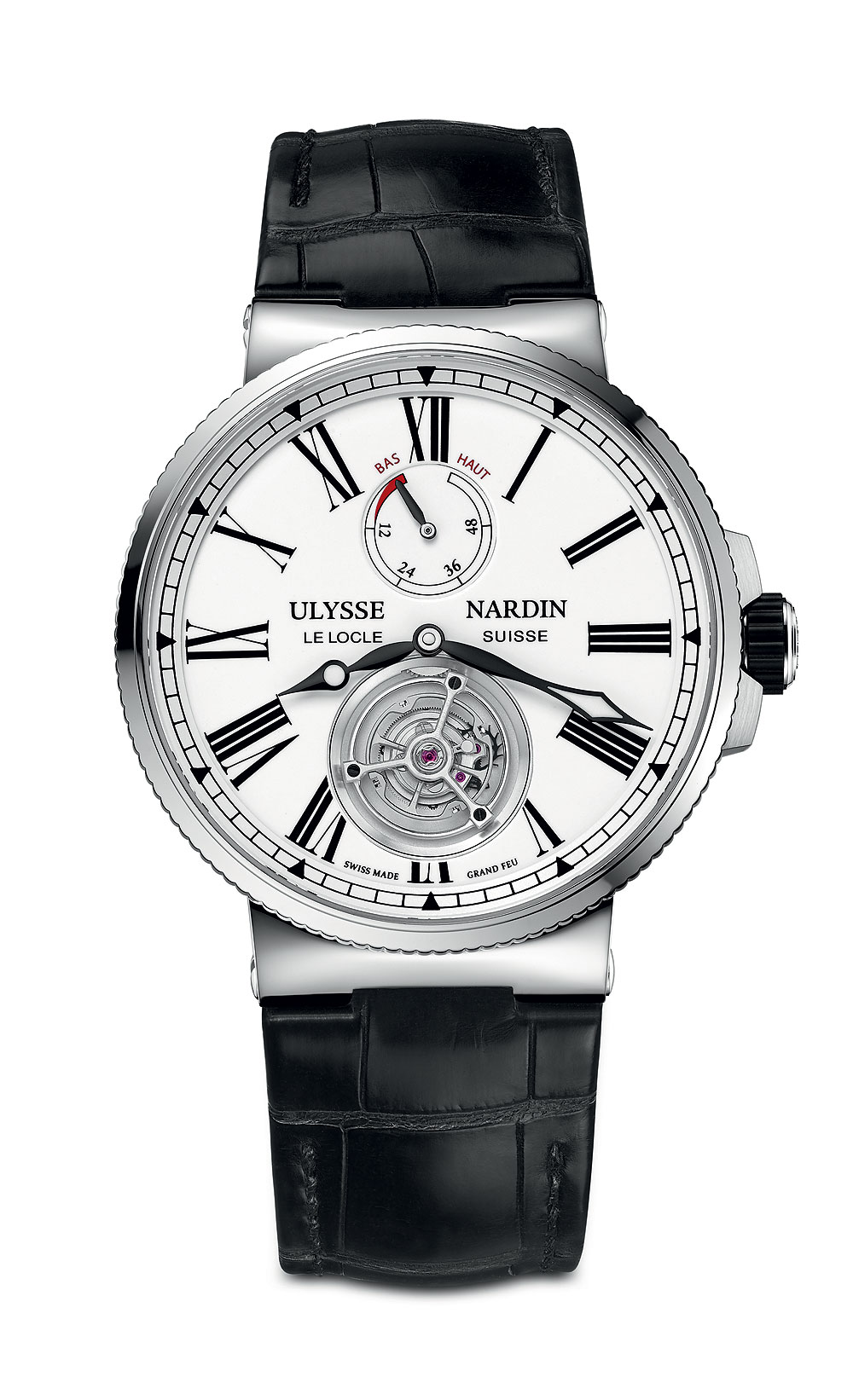

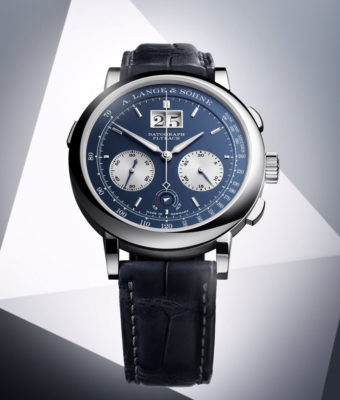
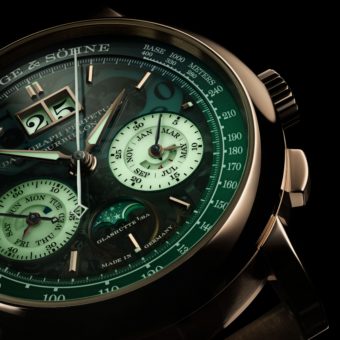
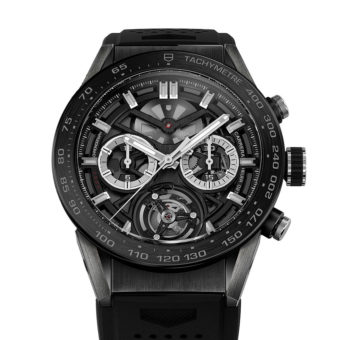
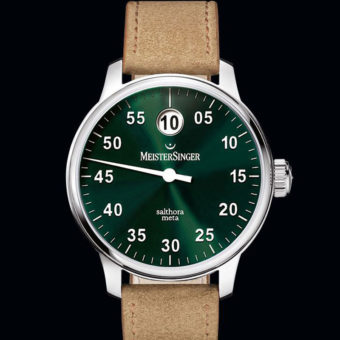
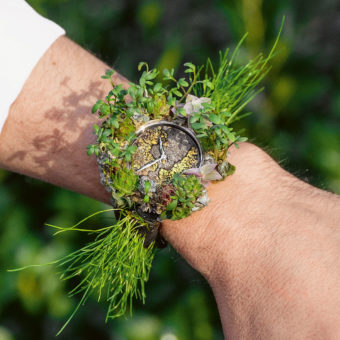
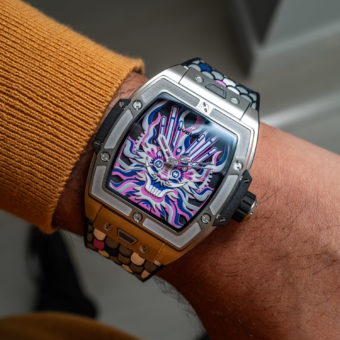
Supper Excellent
OMG Some of those are butt ugly !
What ever happened to beautiful time pieces where you could actually see what time it is instead of having to stare at the watch forever then see the time !
The watches of yesteryear were beautiful monuments to the glory of time we have on earth and giving thanks to God for that time, Those watches look like the designer was on drugs when he thought….Beautiful !